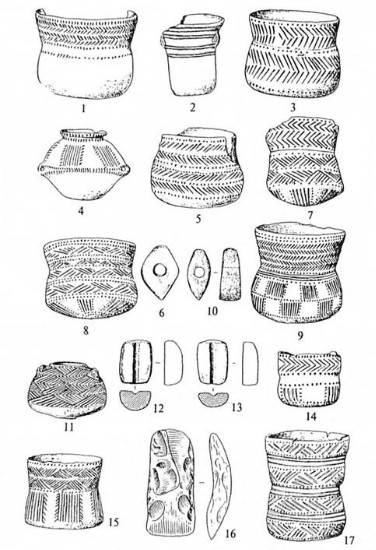Middle-Dnipro culture
Middle-Dnipro culture [Середньодніпровська культура; Seredniodniprovska kultura]. A Bronze Age archeological culture of the late 4th to mid-3rd millennium BC found along the tributaries of the middle and upper Dnipro River and the Desna River. It was first identified by Vasilii Gorodtsov in the 1920s. An offshoot of the Corded-Ware culture in Western Ukraine and other parts of Europe, its trademark was pottery with imprints of rope or small etched lines forming horizontal layers of ornamentation. On the basis of changes in pottery style, scholars have divided the culture into early (34th–32nd century BC), middle (32nd–27th century BC), and late (27th–24th century BC) periods of development. Its major economic activities were agriculture and animal husbandry, although it also traded with tribes in the northern Caucasus Mountains, the region of the Carpathian Mountains and the Danube River, and the Baltic Sea territories. Houses consisted of surface dwellings with stone hearths. The culture practiced both full body and cremation burials in either dugout graves or kurhans. Material culture remains found at excavation sites included stone querns, flint chisels, arrowheads, copper and amber adornments, stone and bronze tools, and (corded-ware) pottery made from clay with an admixture of fine sand. Notable Middle-Dnipro culture archeological sites include Iskivshchyna (near Kaniv), Pekari, and Mys Ochkynskyi.
[This article originally appeared in the Encyclopedia of Ukraine, vol. 3 (1993).]

